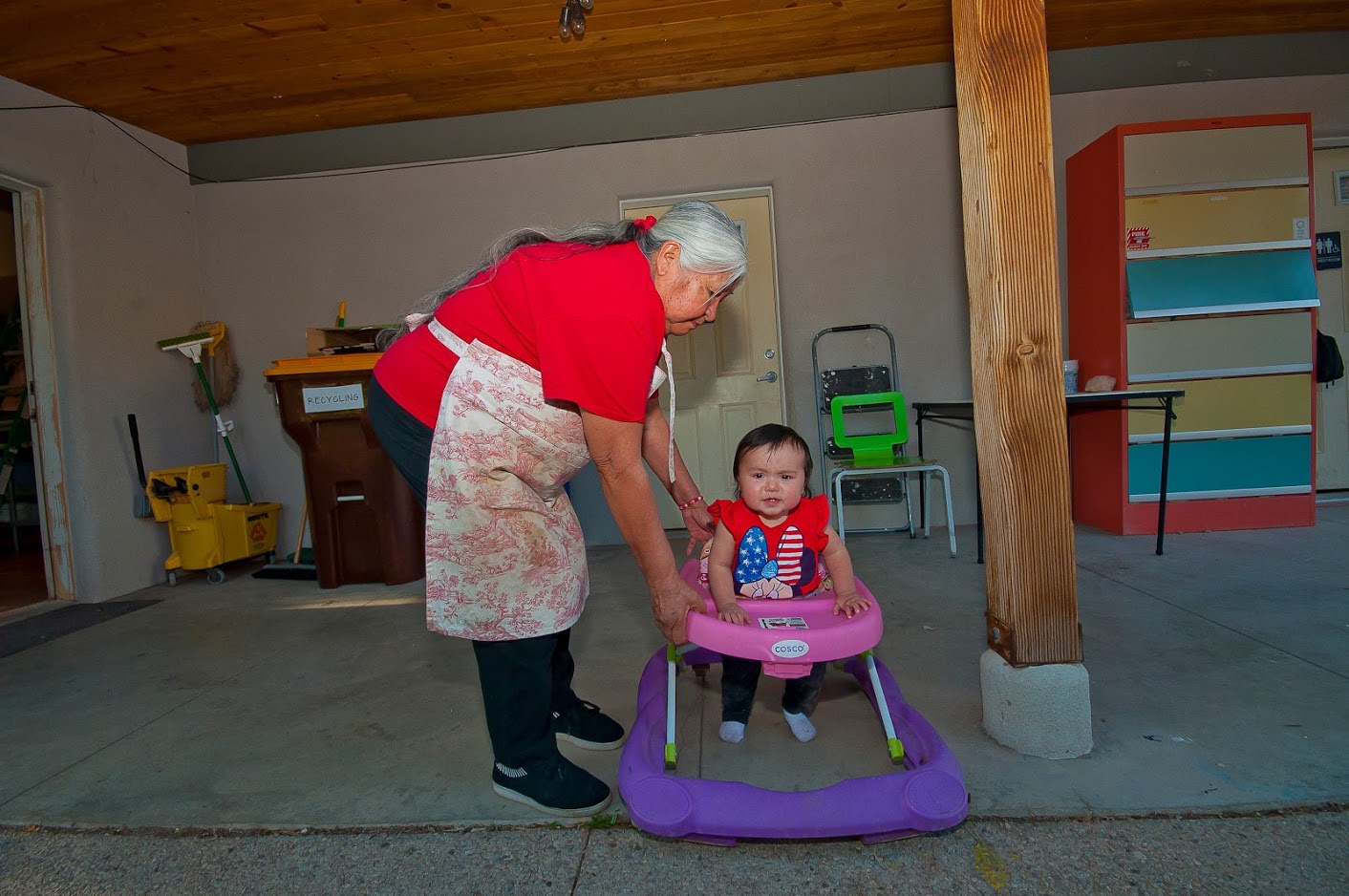Some information may be outdated.
Editor’s note: This is the first story in a series about Indigenous people living and working in the Moab area.
The kitchen smells like Navajo fry bread and lamb at the Youth Garden Project in Moab.
It’s the first Thursday in May and Indigenous people are at the Youth Garden Project to facilitate a gathering circle.
Bread dough is mixed in the kitchen as Betty Bylilly and Kristen Marsh are outside unloading a propane tank and a grill from a car to set up outside for cooking. Peppers are being cooked on another propane grill and chopped wood burns in a fire ring. Lamb and ash bread will be cooked over the coals in the fire ring. For the Navajo people who are gathering at the Youth Garden Project, the monthly meeting is an opportunity to learn and share the traditional ways of Indigenous life.
Tables are set up on the patio near the grills. Children run by in the grassy area beside the patio as their parents continue organizing for a dinner that will be served in about an hour, although no one is focused on time. They say they are focused on being together, cooking and sharing stories.
This is the Nourishing Traditions Indigenous Gathering Circle, a program provided by Seekhaven Family Crisis and Resource Center, and it meets on the first Thursday of every month at the Youth Garden Project. From about 3:30 to 5:30 p.m. the group cooks together and then at 7:30 or so they sit down to eat and then clean up afterwards. It’s open to all Native families in the Moab area.
“Kinship is massive,” Marsh says as she carries a propane tank across the patio with her daughter, Maize, on her hip. “It’s very much anyone and everyone here.”
Marsh is a victim’s advocate at Seekhaven Family Crisis and Resource Center in Moab and works closely with Native people who are in need of supportive services. She leads Nourishing Traditions, a program she started through Seekhaven that began in January and encompasses the monthly gathering circle.
“It’s an evening where we really just have a sacred and safe space to just come together and cook and not be bothered in the sense of — it’s really hard to explain — there’s nothing in Moab, there’s no programs where it’s just Indigenous only,” she says. “There’s not. I started Nourishing Traditions from the ground up because I just wanted a place for gathering.”
Otherwise, she and other Native people in Moab will travel “all the way to the Rez to go to ceremony … to do these big cookouts,” she says.
She’s been working as a victim’s advocate for two years in Moab and will soon transition into a new Indigenous Community Specialist role at Seekhaven where she will continue her focus on outreach, education and prevention while implementing and building cultural programs.
Her aim with education is to facilitate learning opportunities for both Natives and non-Natives, she says.
One of the programs that Marsh is focusing on is building a hogan in Moab. A hogan is a traditional Navajo house or meeting space. Hogans are circular in shape and serve various functions. The one that Marsh is building will be used as a women’s hogan for ceremonies and healing. She says someone donated land in Moab on which the hogan will be built.
The Nourishing Traditions Indigenous Gathering Circle supports the Indigenous sentiment that “we are relational people and everything is about community,” Marsh says.
In addition to the gathering circle, Marsh hosts a talking circle.
The Nourishing Traditions Indigenous Women’s Talking Circle is held on the last Thursday of each month, from 5:30 to 6:30 p.m., at the Youth Garden Project.
“The talking circle is a safe space for women to be able to come and address really hard topics that we have to keep kind of tight-lipped about — disparities,” she says. “I want to talk about missing and murdered Indigenous women, alcoholism, poverty, oppression, I want to talk about all of that. It’s really great because we’re healing together as we do it and that’s paramount.”
At the May dinner, the women are wearing red clothes. Marsh says it’s to show solidarity and awareness for murdered and missing Indigenous women (MMIW). May 5 is the National Day of Awareness for Missing and Murdered Native Women and Girls.
Indigenous community members are beginning to hear about the Nourishing Traditions by word-of-mouth and through social media.
“I’m hoping to get more (people to gather) and get bigger,” Marsh says. “It is going to have to be first-come, first-serve, though, because out capacity is going to be 46. It’s going to take some time, but I’m really looking forward to it.”
She says that she sees and hears a lot being a victim’s advocate at Seekhaven, but the works she does she feels comes naturally because she has “been through 100 percent of it,” referring to domestic violence and cultural disparities.
Marsh is Apache and says her family is from White River, Arizona, but she says she was displaced from her cultural community when she was adopted by a non-Native family. She has since reunited with her family, she says.
Her husband is a park ranger, which brought the couple to Moab from Asheville, North Carolina, with their children.
“There’s a massive population of Indigenous community in Moab,” she says. “When women do come into Seekhaven and if they need to access services, it’s just something that kind of came naturally to me advocating for them through that process because I had already previously experienced it personally.”
Women’s Talking Circle and Gathering Circle for families held monthly
“The talking circle is a safe space for women to be able to come and address really hard topics that we have to keep kind of tight-lipped about — disparities.”
Appreciate the coverage? Help keep local news alive.
Chip in to support the Moab Sun News.





